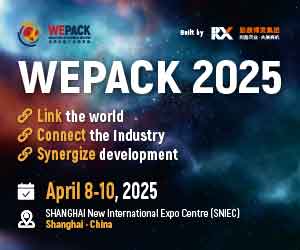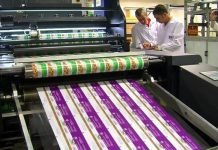Cibus Tec, the trade fair event by Koeln Parma Exhibitions dedicated to Food & Beverage technologies, addressed current industry topics, offering immersive experiences with cutting-edge solutions, high-level conferences, and live demonstrations.
One of the conferences scheduled for today was organized by the Order of Food Technologists from Emilia-Romagna, Tuscany, and Umbria, with the title: “The Impact of Circular Economy on Food Safety.” The roundtable discussion provided valuable insights into the importance of food safety in companies adopting sustainable practices such as reducing their carbon footprint, fighting food waste, food redistribution, and waste management. The seminar concluded a three-day event hosted by the Order, in collaboration with Cibus Tec, which focused on a wide range of topics, including updates on current regulations and innovations in food, from functional foods to cultured meat, from insect-based products to plant-based products, and clean-label offerings.
Simultaneously, in celebration of the 120th anniversary of the International Milk Federation and the Italian Committee, a conference took place aimed at giving voice to the dairy industry, a genuine excellence in Italian food production. The goal was to unite and share virtuous business experiences and new strategic directions to collectively tackle upcoming challenges.
in Hall 2, of great interest were the visits to the Cibus Tec Industry and Demo area, where three highly automated production lines were showcased. One was dedicated to a traditional Italian bakery product that has experienced a remarkable surge in popularity in recent years, first in the foodservice sector and then in organized retail, even achieving success abroad: “pinsa.” The processes of mixing, forming, and packaging the finished product were designed to optimize production, minimize waste, and ensure precise weight accuracy. The line handled the dough with great delicacy to preserve the soft texture hidden beneath the characteristic crispy outer crust. After baking (simulated at the fair), the product was ready for sealing in a flow-pack with triple welds, ensuring airtight packaging. Special metal detectors were in place to prevent the accidental presence of metallic contaminants on the product. The line concluded with the final two steps: a control system for fixed-weight production (capable of reaching a rate of 240 packages per minute) and labeling.
A second line replicated the processes of portioning and packaging hard and semi-hard cheeses. The initial step was cutting, a process that could be conducted with different diameters and heights, resulting in products with fixed geometry or calibrated weight. The portioned cheese was transported to a quality control system that employed 2D and 3D analysis to examine the product both dimensionally and cosmetically. Two anthropomorphic robots handled it, placing it on machines dedicated to packaging, either in a modified atmosphere (MAP) with subsequent weight-price automatic adjustment or on skin packaging attached to cardboard (with passage through a combined X-ray system and a checkweigher for the detection of hazardous foreign bodies). Safety at work was also considered in this line, with specific stainless steel protections safeguarding tasks performed by human operators.
The third line replicated the packaging of “Doypack” bags, applied to candies (but the process is highly versatile). An aspirator transported the sweets to a 10-head weigher, which could adjust the product dosage as needed for packaging. The packaging machine featured both a bag loader with servo-assisted pick & place and a system for discarding unopened or improperly positioned packages. The line integrated an electronic gas mixer in direct communication with the machine, minimizing consumption. At this stage, packages passed through an in-line sealing integrity control system, ensuring food safety and product quality.
In Hall 4, at the Cibus Tec Digital Factory, visitors entered the world of Industry 5.0, where digital technologies such as the Industrial Internet of Things, Virtual Reality, and Artificial Intelligence optimized production efficiency, streamlined maintenance and training operations, made production more sustainable, and enabled new post-sales business models for machine manufacturers.

























